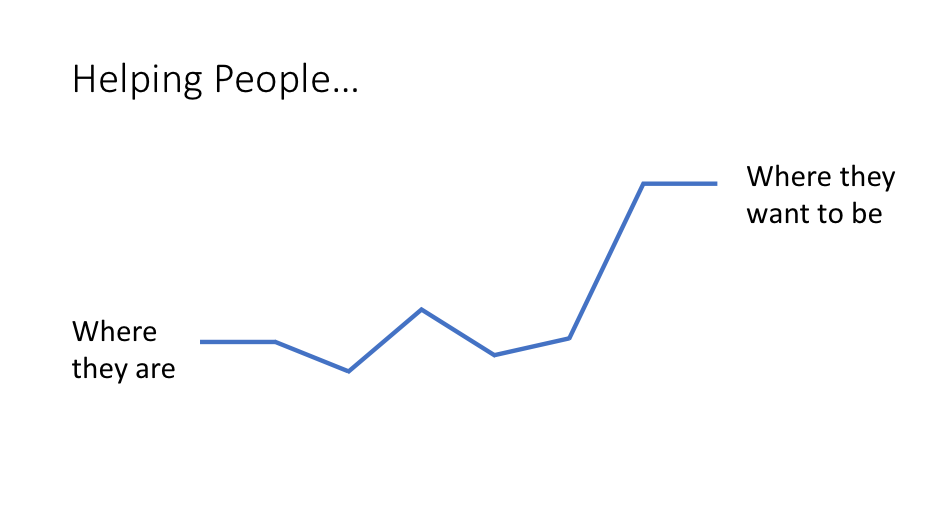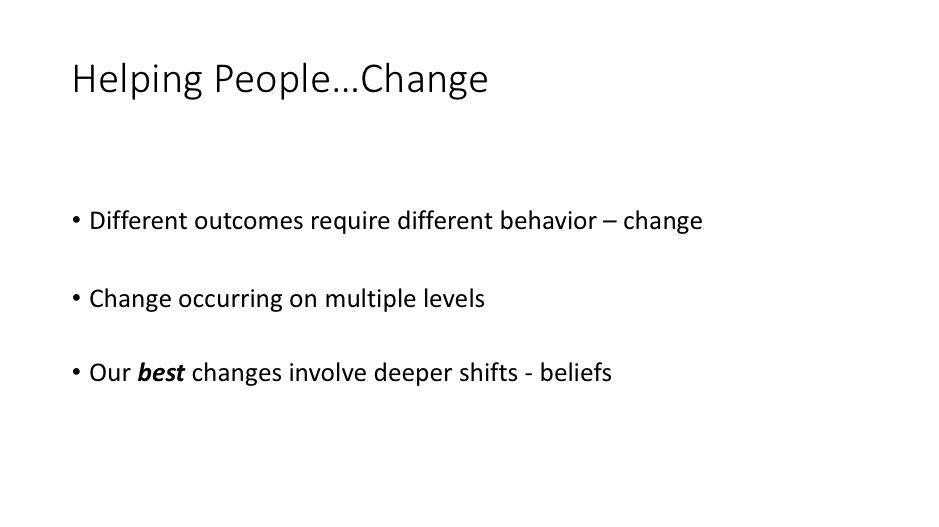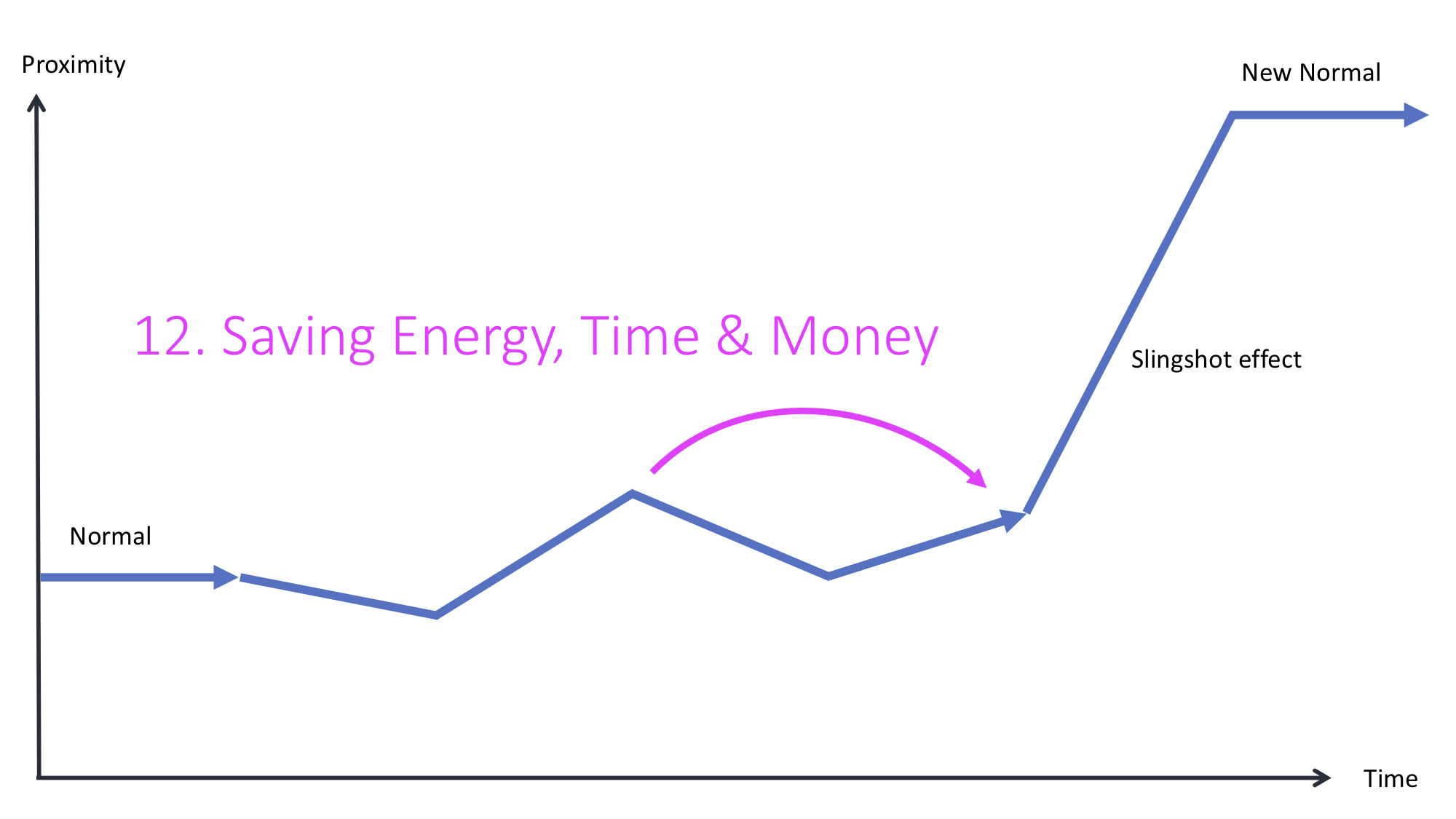If you’re on a phone use the reading font option and just zoom the images as required.
This post has 4 parts:
- Setting the Scene
- The Process of Change
- It’s Not All Beer & Skittles
- The Takeaway Message
Setting the Scene
People in life, sport, and business, use qualified professional coaches to assist them with all sorts of different things.
When they’re feeling stuck, frustrated or unsure how to move forward. When they want to go to the next level. When they have relational issues. When they want to be happier and healthier in their life. When they’ve had a nagging problem for too long. When they’re really looking to stretch themselves and achieve something important. When they want to make leaps in performance.

And the common thing with these examples is that they all involve change of some sort.
Maybe a change in how they see themselves, the world and their situation, a change in relationships, a change of habits, a change in environment, a change in focus or resources, changing thoughts and even sometimes beliefs.
This makes sense. We know that the world around us is always changing, so for us to have the life we aspire for, we must be changing with it. Even to maintain the same outcomes we currently have. We’re either actively creating, or we’re passively disempowering, ourselves in our own lives.
Ultimately, partnering in the process of change is a major service of what coaches provide.
 But real change, that works and sustains, isn’t always easy or simple. Working with a coach supports this process in a way that is:
But real change, that works and sustains, isn’t always easy or simple. Working with a coach supports this process in a way that is:
- Faster
- Better
- Fun
- More likely to occur
…… than doing it alone.
So how does change happen? Well that’s a massive question, and it’s different for everybody of course. In my experience working as someone looking to bring out the best in people, there’s an overall pattern that applies to many different people and groups. The below diagrams illustrate this pattern, and at the end, I’ll highlight the real value to you.
Before Reading On
Key References: Time, Proximity & “You”
For reference in the diagrams below, the graphs are framed by time and proximity. Time is when events are taking place across the duration. Proximity is how close you are to what you want. Throughout the phases I refer to “you” changing. This “you” can have multiple meanings. I’m not saying that you have to change, or are to blame for your situation. However, you’ll be involved, and always capable of doing something to get a different result. Empowering people to willingly take control of their situation is a major part of what coaches do. The use of “you” can refer to you personally, your issue or project, a key relationship, the team you work with, the environment you operate in, or the results and outcomes you’re after.
Recommendation
To get the most out of this explanation below, choose something, in any part of your life, (personal, work, sport or pursuit) that isn’t how you want it to be… Something important and maybe even something that’s been nagging at you in the background for a while. You’ll apply the phases and patterns below to this situation you’ve identified.
Did you do it? Or are you getting impatient with me? 🙂 Ok, here we go:
The Process of Change

- “Business as usual – All good” – You’re going along in your life, things are fine, and change or problems of any type aren’t even entering your consciousness let alone your thoughts. In relation to your particular topic, there’s no problems and you’re operating on automatic. Normal.

- “Readiness” – Over time you become aware of, and increasingly dissatisfied with, a particular issue in your life. It’s effects on you may ebb and flow, but you gradually become less tolerant of it. For people who come to coaching, this dissatisfaction has often been building for months or years, sometimes decades. Eventually you’ve had enough, and you decide to act. You’re “ready”.

- “Early Progress” – You’ve thought about it, decided what to do, and moved into action. You feel better and the early outcomes are improving. Great! Well done. Perhaps you feel relief and even surprise – “That wasn’t too bad, why did I wait so long?”

- “Elasticity” – Often when we use the word elastic, it describes a desirable quality. Not in this case. Elasticity here refers to the pull back into old ways – ways you’re intending to break free of. Often this happens at the point at which we think we’re clear and “out of the woods”. We feel like “I’ve done it, I’m there”. After building momentum, progress and confidence, this false dawn can derail and cause people to lose motivation and hope. Sometimes this mini-cycle repeats itself many times, creating a resignation and fear of even considering better possibilities. All of this is a natural resistance to change.

- “Fork in the Road” – Your slowing of momentum/ downward spiral / lower mood/ avoiding etc. continues for a period of time. This might be weeks, months or even years (humans have a strong ability to put up with shit). Eventually at some point you get to a fork in the road where you decide to either: 1 get back on the horse, 2 completely let it go and drop off a cliff, or 3, harden yourself by denying you ever cared. Sometimes, where you get to, whichever road you chose, is the result of many small decisions rather than one big one, and it can be hard to trace your steps back to the fork. So what’s it gonna be for you?

- “Digging In” – If you’re able to recognise yourself at the fork in the road and find something in yourself or your surrounds that gives you reason to persist, you’re now entering a slow and steady phase. At this point, motivations and principles are different from the Early Progress Phase 3 above. Belief, determination, stability, grit, internal locus of control and the vision you have for yourself, are all required. There’s return for your efforts but the results are more likely to be small, steady, and well earnt, rather than flowing, easy wins. Regardless of the outcomes, there’s also something in you that knows “I’m doing the right thing by myself and being my best” which gives you an inner sense of satisfaction and esteem. Things are feeling real.

- “Significant Insight” – At some point during your persistence with “doing the right things for the right reasons”, an event will occur that changes everything. Often it’s at the time where you’ve become least attached to your desired outcome – you still really want it, but it’s almost like now, you don’t need it. An insight, a major realisation that shifts how you see things, has occurred. This is where new possibilities open up that you actually couldn’t see before. Your belief gets a serious jolt, and momentum builds. You’re feeling it!

- “Slingshot Effect” – Your world’s opened up and you’re flying! Amazingly, things seem to be effortlessly flowing and you can’t wait for the next opportunity to see what you can do with the “new you”. There’s strong alignment between your inner awareness and intent, and your outer world measurable outcomes. The momentum you feel is incredible and then, bang! It happens. You have an experience where it all comes together. The planets seem to align, and you feel like you’re living the dream you’ve always had. It’s hard to believe it’s actually happening, but you recognise it and it’ll become a valuable memory that shapes you. It’s a peak experience. You feel truly alive.

- Your “New normal” – Your peak experience has been followed by more of the same. Maybe not quite as intense but definitely high quality – multiple occasions where you’re not even thinking about it, it’s just happening how you always wanted it to. It’s now actually hard for you to remember how “bad” things were before. A new and improved version, but it’s stable, habitual and automatic. You’ve changed, and so has your situation. It’s become normal.
It’s Not All Beer and Skittles

- “Normal Reversion” – The previous phases up to this point, refer to the forward direction of change, but we’re not so deluded to think change is like hopping on an escalator. Are we? It’s more like a 3-D game of Snakes and Ladders. No, reverting back to earlier parts of the change process is completely normal and to be expected. This can happen at any time and it’s often because the jigsaw pieces we thought we had in place, don’t quite fit and we need to return to sort them out. Often we can’t foresee these ill-fitting pieces and only uncover them through the process of authentic action. Supporting this experiential learning is another part of what good coaches do. For some people, it’ll constantly feel like 1 step forward, 2 steps back. That ok, its normal. We want to learn from these reversions.
*Warning* If we desperately want to achieve our desired outcomes without any appreciation of the process required, or if we anxiously feel we “need” our results for us to be ok, we’ll see reversions as a threat, not a learning opportunity. This will only slow our progress and growth.

- Coaching’s Real Value – With all this in mind, the real value of coaching for you, is to help you successfully navigate, from the elasticity of maximum resistance to change, where critical momentum and hope can be lost; to a significant insight that changes everything for you. From here we enjoy riding the easy momentum, and ask the question of “What next?”
The Takeaway Conclusion

- “So what?” – Now successfully generating desirable results, positive outcomes, meaningful goals and creating future magical memories is great. But does that always require a coach? Of course not. People are resourceful and capable on their own. But if you aren’t getting where you want to be, then there’s no question…..
Whatever your success or lack of, the fact is that good coaching addresses universal values.
Because it accelerates your learning, decision making and effective actions and behaviours…
It saves you energy, time and money!
Offer
If this has got you thinking, I’m happy to have a casual chat about this post and what’s on your mind. No big deal, no obligation. I do it all the time. Just contact me here, mention this post and we can chat.
I’m here to help,
Scott.

